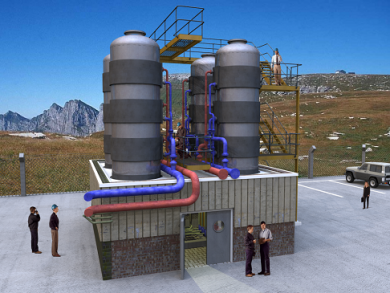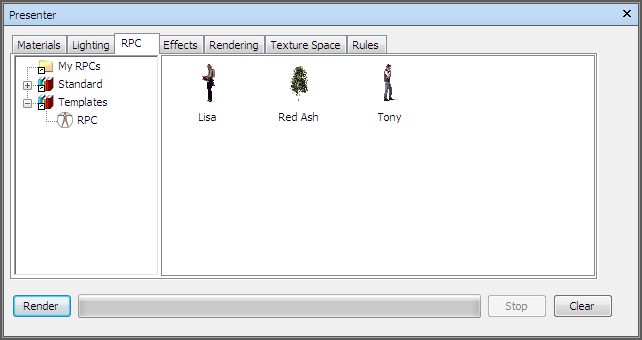The RPC (Rich Photorealistic Content) support in the Presenter window enables the addition of photographic scenery to any 3D project. RPC files can be bought directly from ArchVision, and typically come in libraries of content ranging from trees and plants to people. They also come in a variety of types.
- 2D RPCs are single-direction 2D photographs that always face the camera, and are a single frame, looking the same from every angle, and not animating.
- 3D RPCs are objects that have a high number of frames allowing the camera to move around the object and see it from all angles.
- 2.5D RPCs are animated, single-direction 2D photographs. Animated RPCs will only animate visually when exported as a rendered animation.
- 3.5D RPCs include animation and views from all around the object.
- 3D+ RPCs, often called smart content, are not currently supported.

An example of RPC people on and around a building
The key benefit to using RPC content is that it only takes a short amount of time to fill a scene with realistic content, and it adds very little to the rendering time.
Note: While navigating through the scene, RPCs will always turn to face the camera. If an RPC is 3D or 3.5D, right-clicking it in the Scene View, and clicking Refresh on the context menu will set it to the correct frame, based on the current camera position. Rendering the scene will always refresh all RPCs.
Attention: When publishing a scene using the Publisher dialog box, any RPCs included in that scene are not published to the _Presenter_Maps directory nor embedded in the NWD file. The size of the files, and the fact that most RPCs are licensed, currently prohibits this.
Like the Materials, Lighting, and Rendering tabs, the RPC tab is divided into two panes, with the archives on the left and the palette on the right. This tab is where you set up RPCs.
